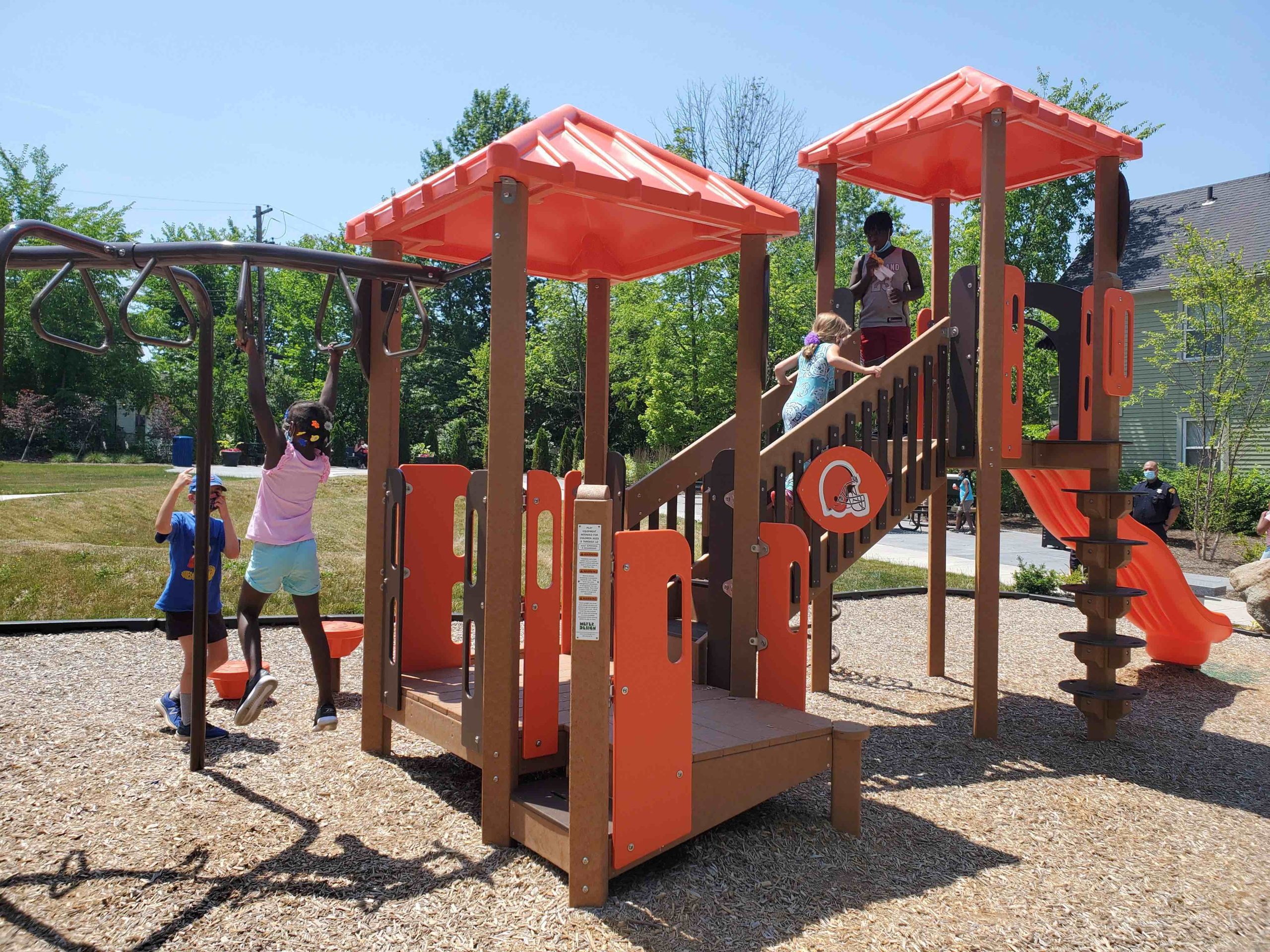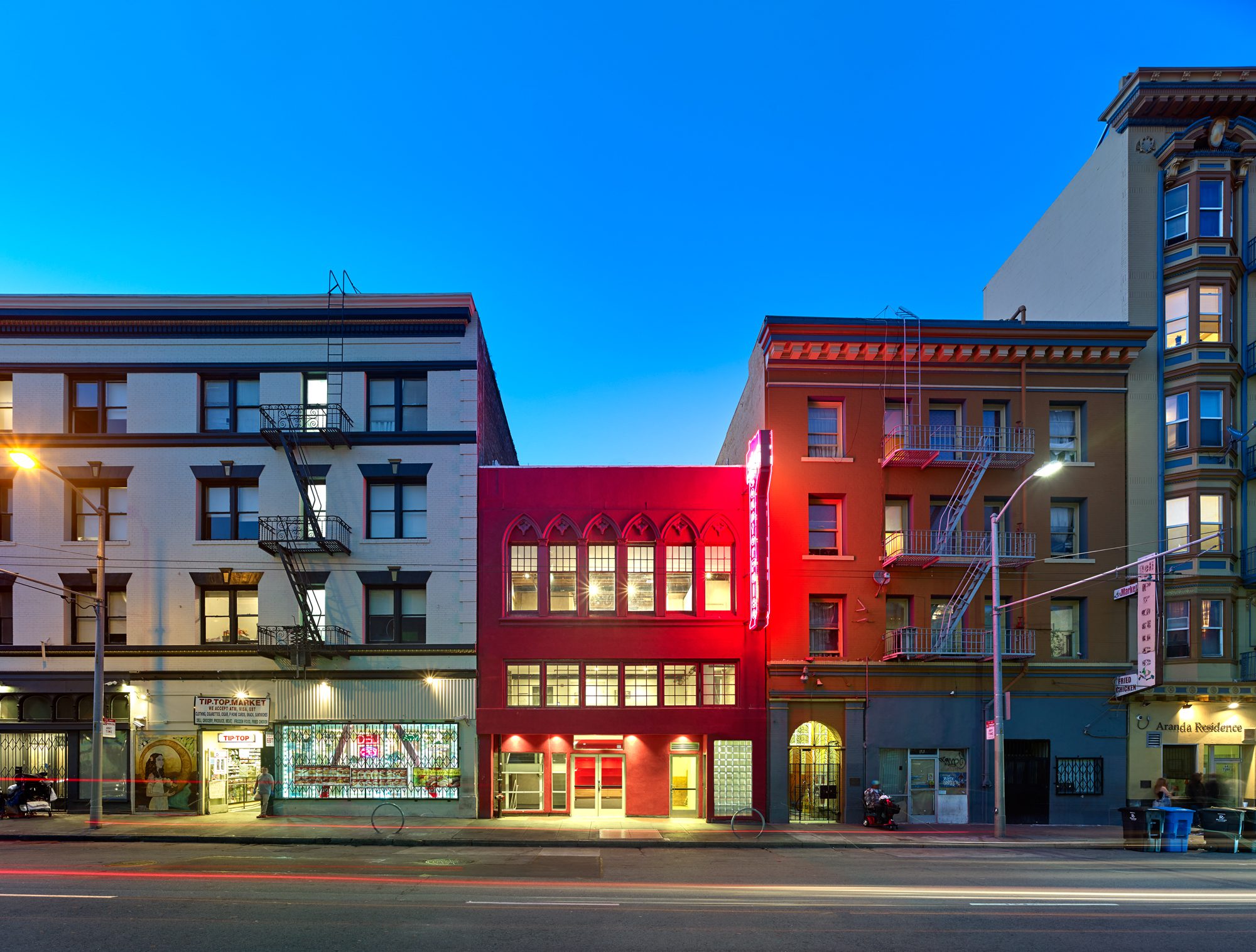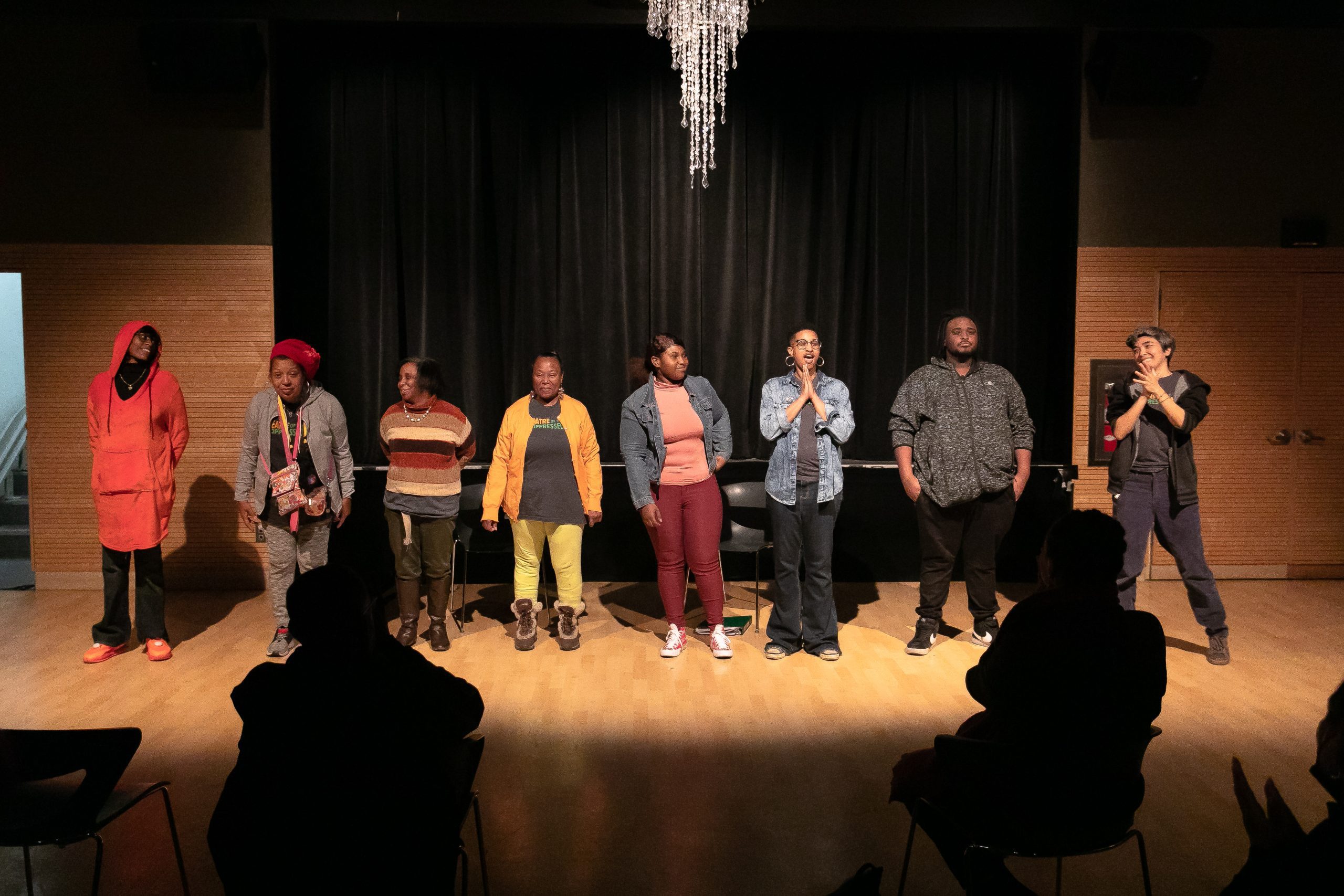In the last few years, we’ve seen a surge of films and TV shows address gentrification—movies like The Last Black Man in San Francisco, Vampires in the Bronx, and In the Heights, and shows like Vida, Shameless, and Gentefied. While the word “gentrification” is being tossed around a lot more, we at Shelterforce are particularly interested in how these storylines and portrayals in cinema stack up to how gentrification plays out in real life.
I recently had the opportunity to chat with organizers and housing advocates about Netflix’s Gentefied—based in the Boyle Heights section of LA—and In the Heights, based in Brooklyn. Joining me was Mindy Fullilove, professor of urban policy and health at the New School, and author of Root Shock and Urban Alchemy; Leonardo Vilchis, co-founder of Union de Vecinos, an organization of neighborhood committees building community power in Boyle Heights; and Kenia Alcocer, co-director of Union de Vecinos.
Below is an edited excerpt of the discussion. See the full video above.
Brandon Duong: The most visible victims of gentrification in Gentefied and In the Heights are businesses—the taqueria in Gentefied and the nail salon in In the Heights. What do you think about this creative choice to focus on small businesses, and are there other people, groups, or institutions that you think should be included in the story?

Mindy Fullilove, professor of urban policy and health at the New School.
Mindy Fullilove: In the Heights was written in 2005. So writing a play about Washington Heights in 2005 [there will be] gentrification, and gentrification is still going on now in 2021. That’s 16 years and it started before that. So it’s really 20 years, and a 20-year-process has a lot of phases. That’s important because part of the harm that gentrification does to people is how long and stressful it is. The stores are a very visible piece of it, [but] it could be another kind of place. There are places where the crisis becomes very vivid for people and so those become the stories of it. Media needs a story. It could have been a story about a family facing eviction, and where did they go. But I think these stories about places are more of a crossroads of all kinds of people. So I think dramatically, those are good choices.
[RELATED: What Does “Gentrification” Really Mean?]

Leonardo Vilchis, co-founder of Union de Vecinos, an organization of neighborhood committees building community power in Boyle Heights in East LA.
Leonardo Vilchis: Focusing on the businesses gives this feeling that the issue really is entrepreneurship and people’s individual struggles to survive. The business itself represents a larger idea within the United States that if you have your business and work hard, you’re going to be able to make it. By focusing on that, it shows that if you figure out and accept this change, you’re going to survive.
But the reality is that you don’t survive because the competition that is coming after you has different kinds of resources. Your rent is going to go up, people are not going to buy your products, and your ability to have access to the resources that the other businesses have just does not exist.
There’s a scene in In the Heights where Usnavi, the protagonist, said something along the lines of, “Maybe this is our last night together, but there’s no point in moping around. Let’s enjoy our time while we can.” Can you talk about some of the forces behind gentrification and how storytellers can incorporate that into their plotline?
Fullilove: That’s a really big question. My colleague Derek Hyra just finished a paper about the fifth wave of gentrification. He contends that the forces behind gentrification have evolved. So in the beginning, we conceptualize it as a wealthy couple coming to a poor neighborhood, buying a house, and fixing it up. But now it’s multinational corporations that are buying up. And they’re actually not only buying up all the real estate in the poor communities, they’re buying up all the real estate in the nation. So there’s not going to be any of us that own anything as this plays out. What we’re calling gentrification is really the cutting edge of a much larger process. It’s rapidly evolving. The torture of poor people is just the tip of the iceberg. I don’t know how you make a movie about that. It’s very complicated.
‘What we’re calling ‘gentrification’ is really the cutting edge of a much larger process …The torture of poor people is just the tip of the iceberg.’
Vilchis: How do you show speculative market in a movie? The challenge is representing the market and speculation as part of the process, or the culture, and the values of individualism and competition. They’re key in this process.
In our experience the most harmful was people with good intentions that couldn’t stop to think about how much damage they were making. That’s difficult to express. And that’s something that also flows through the whole situation: these issues of really good intentions, but at the end of the day, how they have a negative impact on community, like changing the kind of tacos and the value of those tacos so you can make your business survive. That’s going to save the business [now], but [it] ends up killing the larger process in the community. I don’t have an answer on how could you fix that.
Can you talk about and compare how these shows and movies portray resistance to gentrification versus how people in real communities resist gentrification?

Kenia Alcocer is co-director of Union de Vecinos.
Kenia Alcocer: It’s very individualistic. It’s one person trying to save their business. It doesn’t tell the complete story that people have been organizing, working, building connections, and building a community in these areas.
Resistance is portrayed as one individual action making an impact and not a collective process where people are actually sitting down having discussions, and analyzing why they’re doing what they’re doing, and how they’re resisting and why they’re resisting in that manner. That’s very important, because it also shows the growth of community leadership. It shows the growth of folks that have been developing plans to fight for their communities. We and others we know have been fighting gentrification since 1996 with the demolition of the projects. Gentrification didn’t start 10 years ago. That’s something that folks can’t see from these types of films. [These portrayals of resistance] also make it a process that’s very isolating. So when the defeat comes, it feels like “Oh, poor person, they just lost their business,” and not something that an entire community lost together. When we lost our laundromat on 1st and Boyle, it was devastating for a lot of communities because now women that usually used to walk to the laundromat no longer had it. When you’re talking about a supermarket that is lost, it means resources that people are losing access to, food. So for me, it’s very individualistic, it doesn’t really explain the process that entire communities go through to organize and to really fight back against gentrification.
Someone from the audience asks, “I’m interested in the collective trauma conversation. Having worked in a neighborhood that has experienced significant loss over the past 20 years, I find the deep sense of loss manifesting as depression and hopelessness. I was wondering if using the word ‘gentrification’ is the best word to describe the losses and the change?”
Alcocer: One of the things that we’ve been talking about is the violence that comes to our community and creates within our community. One of the things that I keep going back to is Loretta King saying, “poverty is violence,” and gentrification is violence. And we need to talk about it as it is, because once you’re tearing families away from communities, it is a violent process. We had one Indigenous family that had been living in Boyle Heights for years, and they were displaced. We have families that are deaf and have created a sense of community in this neighborhood, and they were displaced. And all of this because of corporate greed. All of this because of landlords that just want to develop, develop, develop.
And develop for who? We see downtown LA being developed with luxury homes that are empty. And that’s another reality when we’re talking about, “Oh, we’re trying to make your community better.” Making that community better doesn’t necessarily mean that new folks are going to be coming into this community. People can’t afford to rent in those communities. And we’ve seen that even people that have been gentrifying our community right now during the pandemic are having issues paying their own rent. They’ve lost their jobs. And now they are becoming part of this movement because they realized that they were only the first wave of gentrifiers. And they weren’t the people that these homes were being designed for because they can’t afford them anymore.
We need to figure out ways in which we can change this language to adapt to the reality of communities. So gentrification, when we talk about it in Boyle Heights, we’re talking about the violence, and we’re talking about all the bad things gentrification is. That only happens through political education and through working with communities and having these conversations. [‘Gentrification’] was a difficult word for our community members to even pronounce at points. And that’s something that is funny because ‘gentefication’ is actually how people were able to pronounce gentrification. Taking over some of the language, giving it power, and giving it significance is important.
Fullilove: The length of time this goes on is relentless. You might save your business, you might save your house this month, but what about next month? And [when] somebody [else] moves in, it’s not meant for them either. I don’t care how rich you are, it’s not meant for you. It’s meant to make money. You’re just there as long as you have enough money to be there, or until they want to put you someplace else because they’ll make more money. We’re not building homes to make a society, we’re building homes to make money. And that’s devastating for the health and the wellbeing of the population.
A word I’d like to throw out is alienation. Because part of what happens to people when they see big business and they see government destroying their neighborhoods, destroying what they built, is they become alienated. It’s not just hopelessness, it’s also “I don’t want to bother with you.” And then they don’t want to vote. And they don’t want to protest. Because what good will it do? So alienation is a significant problem in our country. And it’s really across the board among all the poor people, which is why it’s important to think about the Poor People’s Campaign and the hope that it has brought to all of us by having an agenda. What is it we need to have a country that’s inclusive and that’s healthy for everybody?
Another audience question: Given the notoriety that came with In The Heights, did it help promote and support the struggle and fight?
Vilchis: Both [In the Heights and Gentefied] present the idea that somehow we have to accommodate this progress and somehow we have to adapt. That is highly problematic in the sense that we don’t see the sacrifice and the amount of people and relationships that are sacrificed through that accommodation, through that that acceptance, and through negotiating our defeat without a fight. I think it doesn’t help because the general message is somehow we have to adapt and somehow we have to accept it. In Boyle Heights when the galleries were coming to our neighborhood, we said no. And we had the most militant, aggressive, disrespectful, insulting—I’m speaking from the perspective of the people who were “attacked”—campaign against the galleries that eventually resulted in the closing of all the galleries in the neighborhood. But boy were people pissed off at us, the LA Times was upset with us, our councilmember was upset with us, the local nonprofits who didn’t know which way to go were upset with us, the community that wanted to benefit from this [and] businesses were upset with us. That was really, really, really difficult and that’s because we chose not to negotiate our defeat without a fight. We chose to fight and if we lose, we were going to have to negotiate our defeat. But the galleries left.
[Gentefied and In the Heights focuses on] a moment in history when someone chooses to negotiate and accept those conditions. But that’s not necessarily the end. At some point, you’re going to have to fight. In Gentefied, it just takes it for granted. The messaging is—“You have to accept change,” “change is difficult, but we have to,” “You have to align with progress.” I have a whole list of the phrases that come on Gentefied that basically say, “Man, just get over it is going to happen.” This really pushes my buttons. This is like sexual harassment, no means no. And what these commenters are saying is no to this abusive, invasive, destructive imposition of progress values and development values. And by the way, you cannot have gentrification without displacement. That’s how the machine works. But [Gentefied and In the Heights] tell you we will have to accommodate and get used to it.
Do you think the cultural aspects of gentrification are put on a pedestal while the material conditions and the economic realities are pushed aside?
Alcocer: You have mariachis all over 1st Street and yet mariachis are being evicted or [their] rents are being hiked up. It’s good to have that image of them and know that they work in the vicinity, but when it comes to protecting them and making sure they stay in the community, it’s not. BJ Turner, for example, didn’t care about that. He knew he was buying his property in a very nice community where all this development is happening on First Street. But he didn’t really care for the mariachis, even though their faces are all over murals. And people go to that street particularly because there’s mariachis, but nobody cares that they’re being evicted, or that their livelihoods been threatened by gentrification.
[RELATED: Tenant Power—Organizing for Rent Strikes and Landlord Negotiations]
Vilchis: And again, when we talk about culture, we should talk about the culture that the community has created, the images, the relations, the music. When we’re talking about a change in culture, we’re talking about colonization.
Alcocer: And for communities like Boyle Heights, because a lot of folks are there from Central America and Mexico, they weren’t just displaced by imperialism from their home countries. Now they come to the United States [and] they’re being displaced again, not by imperialism, but capitalism coming into their community. So it’s a double displacement of communities.
Any last comments?
Fullilove: My book, Root Shock, looked at Urban Renewal in the 50s and 60s. Urban renewal was all about progress so they said they had to get rid of the slums. And anytime they wanted to say a city has a problem and “we need to have progress,” they were talking about moving the poor people. But they always have a good reason for it. “They need to be moved because they live together. They should be integrated. We’ll move them someplace else so they can be integrated.” Part of the work of genuine cultural workers is to reveal the lies and the cheats that are going on. I don’t know how much we can expect of the Hollywood media. They’ll get pieces of it, right, but this deep story of how we’re being robbed is going to be for the radical culture makers to tell.
Alcocer: For me it’s believing in the self determination of communities. Communities already know what they need, they know what they want, and putting those investments into [what a community] needs and wants is very important. For example, our communities were pushing back against some Metro development that was happening and community members said we’d rather have a park than have housing that is not affordable for us. We’d rather have a laundromat than have housing that is not affordable for us. They know what they need and what they want.
Also, all these shows and movies that are coming into our communities and filming are disrupting the lives of our community members. Every time Vida is filming in Boyle Heights, that is parking spaces that community members cannot park in, that is streets and businesses that are being closed in order for that filming to happen, which disrupts the life of community members. And people are having to get used to these things. Mayans, all these other shows that are fetishizing our communities to make their movies, are disrupting the lives of our communities. And we also have to understand that none of the benefits or proceeds from those particular films are coming back to our communities. None of that money is coming back. None of that money is being invested to fight back against gentrification. That is important for us to think about. And the violence that sometimes these movies bring into our communities or expose creates more trauma—remembering the shootings and the gang members that have lost their lives. These folks have to think about the manner in which they come into our communities and film.
Thank you.





This is the best informative conversation about gentrification I’ve ever heard/read. Thank you!!
You left out Robocop 3. Rehabs force evict people from homes to demolish and make way for the new Delta City which will be available to house the rich.
Yeah, this movie sucks. But it predicted Gentrification and it’s happening.